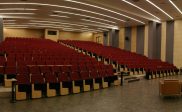The Evolution of Stage Lighting Technology in Modern Theater
From the sun’s arc across an ancient Greek amphitheater to the pinpoint precision of digitally controlled LEDs, stage lighting has undergone a remarkable transformation. More than mere illumination, it has evolved into a sophisticated art form, a crucial collaborator in storytelling, capable of sculpting space, evoking emotion, and guiding the audience’s eye. This journey mirrors the broader history of technological innovation, yet remains deeply rooted in the fundamental theatrical impulse to shape perception and enhance the dramatic experience.
Harnessing nature and the first flickers of artifice
The very origins of theater are intertwined with light. Early performances, perhaps enacted around a communal campfire, utilized the fire’s glow as a natural focus point, drawing performers and spectators together in a shared, illuminated space. The ancient Greeks demonstrated a profound understanding of natural light’s power, strategically orienting their vast open-air theaters, as detailed in historical primers on stage lighting, to harness the sun’s path throughout day-long dramatic festivals. This careful consideration of solar angles was, in essence, the earliest form of lighting design, maximizing visibility while avoiding glare for the audience. While the Romans employed torches for effect, the true catalyst for artificial lighting innovation came with the Renaissance, as performances moved indoors. This shift necessitated new solutions, giving rise to candles and oil lamps, initially for basic visibility, but quickly adapted for dramatic emphasis. Italian stagecraft, in particular, flourished during the 16th and 17th centuries, establishing lighting positions and techniques, like Angelo Ingegnieri’s concept of concealed overhead lighting (a precursor to the modern ‘first electric’) and Josef Furttenbach the Elder’s documentation of using numerous lamps behind the proscenium for bright, daylight-like effects, that resonate even today. Early experiments with colored light, using water-filled glass vessels (‘bozze’) and reflectors, signaled the dawn of manipulating light’s quality for artistic purposes.
Gaslight, limelight, and the dawn of centralized control
While natural light remained relevant, particularly in Elizabethan England where hall playhouses maximized window placement, the quest for brighter and more controllable artificial light continued. David Garrick’s 18th-century modernization efforts in London, removing obstructive chandeliers and refining light placement, aimed for cleaner illumination, though footlights likely predated his popularization of them. A significant leap occurred in 1817 with the introduction of gas lighting in London theaters, soon followed by venues like Philadelphia’s Chestnut Street Theatre in 1816. Gas offered superior intensity and, crucially, centralized control via the ‘gas table’ or ‘gas plate’. This innovation, as chronicled in brief histories of entertainment lighting, allowed for dimming effects across different stage areas and even the auditorium itself – a practice championed by Richard Wagner at Bayreuth to immerse the audience more fully in the drama. Bram Stoker, working with the legendary Henry Irving, noted gaslight’s ability to create ‘vignettes’, focusing attention with unprecedented precision. Around the same time, limelight, produced by heating calcium oxide, emerged as a powerful new tool. Initially used in floodlights from around 1837, Charles Kean’s addition of lenses in 1855 transformed it into an effective spotlight, famously giving rise to the phrase ‘in the limelight’. Despite advancements like overhead gas battens providing more naturalistic angles than the often-criticized footlights, the inherent dangers of gas and limelight spurred the search for safer alternatives.
The electric revolution and the birth of the lighting designer
The late 19th century ushered in the electric age, fundamentally reshaping stage lighting. The Paris Opera’s adoption of Joseph Swan’s incandescent lamps in 1880, and London’s Savoy Theatre becoming the first public building fully electrified in 1881 using Swan’s and Edison’s innovations, marked a paradigm shift. Electric light offered greater safety, control, and intensity. Early systems, controlled by resistance dimmers, allowed for variable intensity, a concept pioneered by companies like Adrien de Backer (ADB), which produced the very first theater dimmer. While initially basic, control systems rapidly evolved, as seen at the Paris Opera shortly after the Savoy’s debut. This technological leap coincided with evolving artistic philosophies. While Henry Irving perfected illusionistic lighting, visionaries like Adolphe Appia advocated for expressive lighting that mirrored the characters’ inner states, rejecting painted scenery in favor of three-dimensional forms sculpted by electric light. David Belasco, collaborating with Louis Hartmann – inventor of the first practical lensed spotlight later installed at Boston’s Bijou Theatre – became renowned for spectacular effects like the sunsets in ‘Madame Butterfly’. Despite these breakthroughs, lighting often remained an afterthought until the 1930s and 40s, when figures like Abe Feder, Jean Rosenthal, and Peggy Clark established lighting design as a specialized, artistic discipline. Stanley McCandless, a pivotal educator, codified lighting principles (intensity, color, distribution, control) aimed at achieving visibility, mood, and naturalism, and contributed to the development of the ubiquitous Ellipsoidal Reflector Spotlight (ERS), often called the Leko. The growing recognition of the lighting designer’s artistic contribution was formalized by their inclusion in theatrical design unions by 1962.
Digital control, automation, and the rise of LED
The latter half of the 20th century and the dawn of the 21st saw an explosion in control technology and fixture innovation. Electronic dimming replaced bulky resistance dimmers, offering finer control. The true revolution arrived with computer consoles, debuting on Broadway with Tharon Musser’s design for ‘A Chorus Line’ in 1975. As Musser herself highlighted, these consoles unlocked unprecedented potential for complex cues, precise timing, and repeatability, fundamentally changing the designer’s workflow and capabilities. This era also saw the rise of automated lighting. The development of the Vari-Lite for the band Genesis in 1980 marked the advent of commercially viable moving lights capable of changing color, position, and beam characteristics remotely. Standardized control protocols like DMX512 became essential, allowing seamless integration of conventional fixtures, automated lights, and increasingly, media servers. Modern productions often employ multiple specialized consoles to manage these complex systems, reflecting the intricate layering possible in contemporary design, a complexity navigated by skilled professionals often represented by unions like IATSE, whose members constantly adapt to evolving technology.
The LED transformation
Perhaps the most significant recent transformation has been the widespread adoption of LED (Light Emitting Diode) technology. Initially met with some skepticism, LEDs have fundamentally altered the landscape. As detailed in discussions on new expressive possibilities through lighting technology, LEDs offer remarkable energy efficiency (consuming up to 75% less power than traditional sources), significantly longer lifespans, and unparalleled color control. Instead of relying on physical gel filters, LED fixtures mix colors internally, allowing designers to access millions of hues instantly and adjust them in real-time without the light loss associated with deep-colored gels. This flexibility streamlines the design process and expands the creative palette enormously. Furthermore, quieter, fanless moving lights, like ETC’s SolaFrame Theatre, have made automated fixtures more suitable for intimate theatrical settings. While initial costs can be higher, the long-term savings in energy, consumables (gels and lamps), and reduced infrastructure (dimmers and cabling) are substantial.
Integrating diverse technologies
Modern lighting design often involves integrating various stage lighting instruments – from sophisticated LED profiles and washes to automated fixtures and even traditional tungsten units where their specific qualities are desired. The challenge and artistry lie in orchestrating these diverse tools. Advanced control systems, often utilizing DMX software and intelligent lighting control, enable pixel mapping, intricate effects, and seamless synchronization with sound and video elements, pushing the boundaries of immersive theatrical experiences. The modern lighting designer, as highlighted by educators like Lonnie Rafael Alcaraz, must be both a technician mastering these complex systems and an artist interpreting the dramatic needs of the production, as explored in resources for technical production.
Beyond illumination: The enduring art and future horizons
The evolution of stage lighting technology is not merely a history of hardware; it’s a story about expanding artistic potential. As technology advanced from basic visibility provided by gaslight to the dynamic capabilities of LEDs and automated fixtures, its role shifted dramatically, becoming integral to conveying mood, focus, and narrative – the very ‘glue’ binding production elements, as discussed in resources like #TheatreAppreciation. Studying this evolution is enriched by resources like The Lighting Archive and the foundational work of the Theatrical Lighting Database, which preserve the invaluable plots, charts, and paperwork documenting designers’ visions and technical execution across generations. Looking ahead, the integration of media, wireless control, and potentially even laser technology promises further innovation. Sustainability is also a growing concern, balancing the energy efficiency of LEDs against the environmental impact of their manufacturing. Yet, amidst relentless technological advancement, the core purpose remains constant: to serve the performance. The most sophisticated technology is only as effective as the artistic vision guiding it. The true magic lies not just in the lamps and consoles, but in the designer’s ability to wield light, shaping perception and deepening the audience’s connection to the enduring power of theatre. The journey continues, forever seeking new ways to paint with light.


